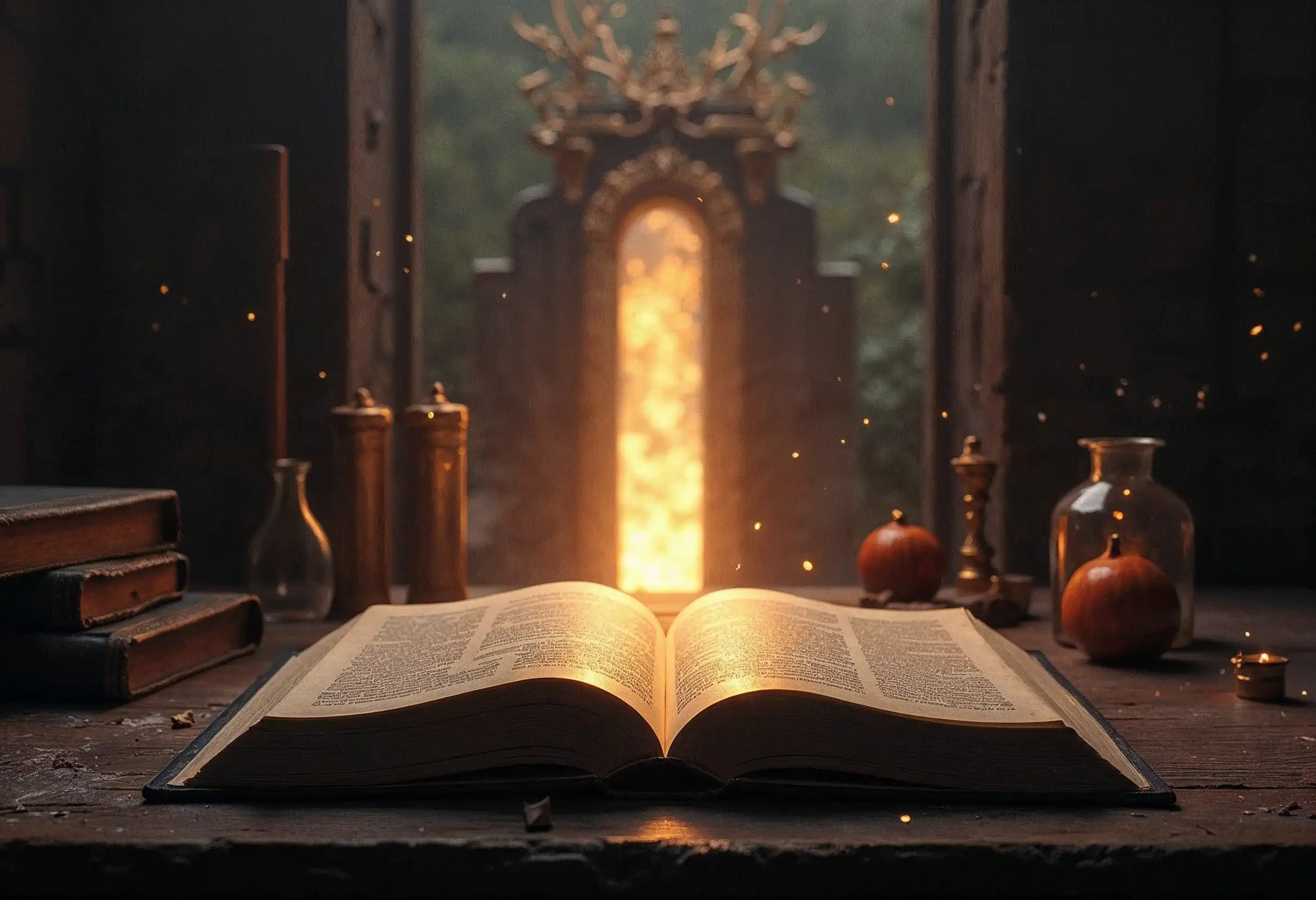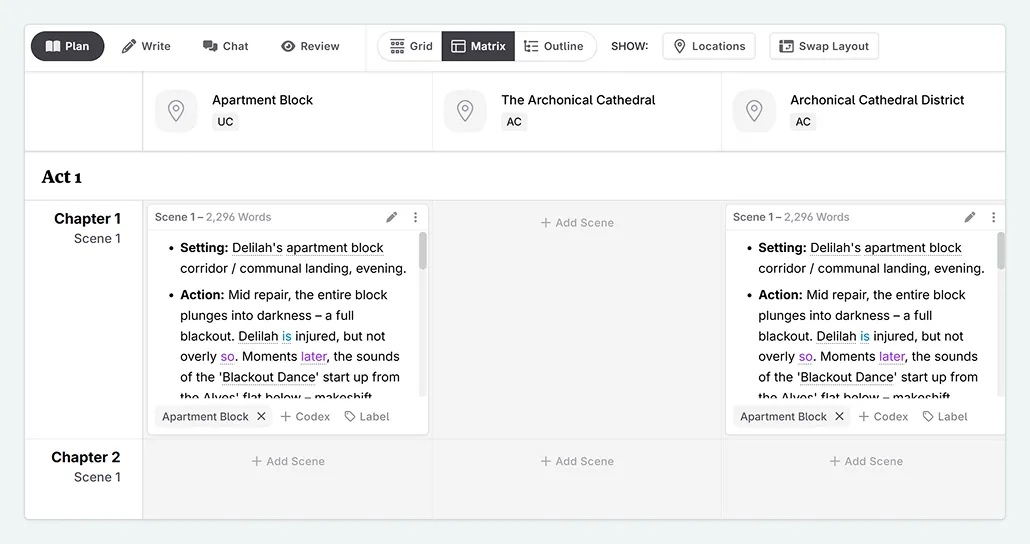
- Level:
- Beginner
- Lessons:
- 3 Lessons
Tracking locations through your story
Track your locations through Codex entries, Labels, and the Matrix
- Reading Time
- approx. 2 min
Ever lose track of which characters have been to which inn, or where a specific event took place? A story’s setting, pacing and mood is heavily influenced by which locations we use (or skip), how long our characters are there for, and if they (frequently) come back to them or not.
Seeing your story’s journey laid out visually can be a great help to make sure you don’t accidentally let your protagonist wander off, introduce plot holes, or have other world building inconsistencies.
Novelcrafter offers two powerful ways to track your locations:
For rich, context-aware tracking, you can link a location’s Codex entry directly to your scenes.
You can also use custom Scene Labels for key locations you want to focus your planning on.
Let’s see how they can be used and where they differ.
1. Adding Codex entries to Scene Context
The Codex is the source of all knowledge about your story, and is the recommended way for managing your story’s locations. It also makes the info available for when your story (or the AI) needs it. Whilst you can mention the location in a Scene Beat, you may want to add the location to the AI context once for the scene (and not have to worry about it later).
To do this, click the + Codex button under a scene summary to link the scene to a location’s Codex entry.
![]()
This allows us to…:
…have the location details be added to the AI context for all Scene Beats, as well as text replacement prompts automatically.
…include any other Codex entries you’ve added as a related entry to that location, like important characters or items you’d find there!
…see the locations used at a glance, by filtering your Plan Matrix by location.

2. Using Labels
It may be that you don’t need the AI to have the details about a location, but you still want to see how often your characters end up in the same café or capital city.
In this case, you could use Scene Labels. In your novel settings, you can create custom labels for key locations you want to focus your story planning around.
This is particularly helpful when…:
You have lots of location Codex entries, but only want to see a few of them tracked through your story (for instance, you might only want to see the cities or districts a story takes place in, not each individual house).
You only want to see locations where events take place, not every location mentioned in a scene (so no Grove of Forgotten things appearing in a scene that’s set in a city tavern).
You have lots of locations, but want to plot out only a few throughout your story.
Troubleshooting and Tips
I can’t distinguish the locations from other labels/ entries
Remember that both Scene labels, as well as your Codex entries can be color-coded! This allows you to make things stand out more across the app:
![]()
When you open the Plan Matrix, it also shows the colors for each column:
![]()
The AI still doesn’t know where my story is set
Neither of these tricks automatically tells the AI an entire scene happens in the given location. You’ll still want to mention the setting and any important details in your scene’s summary and beats (instructions for writing AI prose) to get the best results. Linking the Codex entry says “here is some more information”, but does not give explicit context to that information.
This lesson was taught by:
Kate
Based in the UK, Kate has been writing since she was young, driven by a burning need to get the vivid tales in her head down on paper… or the computer screen.